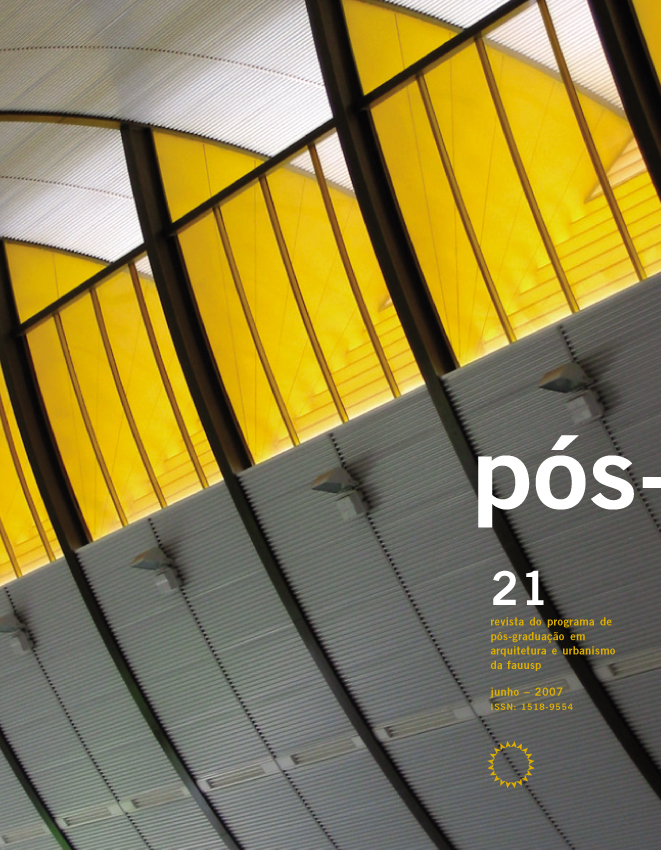Double-skin façades on high-rise office buildings in São Paulo: an environmentally efficient solution?
DOI:
https://doi.org/10.11606/issn.2317-2762.v0i21p112-126Keywords:
Façades, double-skin façades, high-rise buildings, office buildings, environmental performance, thermal comfortAbstract
This paper presents the key findings of a master's dissertation developed as part of the Environment and Energy Studies Programme of the Architectural Association Graduate School - AA, London, in 2003/2004. The study investigates the applicability of double-skin façades on high-rise office buildings in the city of São Paulo, Brazil. As part of the investigation, the origins and characteristics of the systems are studied, identifying suggested reasons for the use of such façades in high-rise offices. Conceptual models were created to qualitatively compare and evaluate the performance of different double-skin typologies. A comparative analysis was undertaken taking the climatic conditions of São Paulo into account. The application of double-skin façades was investigated with dynamic thermal simulation, using TAS (EDSL 2003) to assess thermal performance, and using ECOTECT (Square One 2004) and RADIANCE for daylighting studies. The results provide an overview of environmental considerations underlying the design and possible application of double-skin façades in São Paulo.Downloads
References
GONÇALVES, J. C. A sustentabilidade do edifício alto. Uma nova geração de edifícios altos e sua inserção urbana. 2003. Tese (Doutorado) – Faculdade de Arquitetura e Urbanismo, Universidade de São Paulo, São Paulo, 2003.
INTERNATIONAL ORGANIZATION STANDARDIZATION (ISO) – ISO 7730. Moderate thermal environments: Determination of the PMV and PPD indices and specification of the conditions for thermal comfort. Genebra: ISO, 1994.
LAMBERTS, R.; DUTRA, Luciano; PEREIRA, Fernando. Eficiência energética na arquitetura. São Paulo: PW Editores, 1997.
MARCONDES, M. P. Double-skin façades in high-rise office buildings in São Paulo. A possible environmental efficient solution? 2004. Dissertação (Mestrado) – Architectural Association Graduate School MA Environmental, Londres, 2004.
NBR 5413. Iluminância de interiores. ABNT – Associação Brasileira de Normas Técnicas, 1991.
PASQUAY, T. Natural ventilation in high-rise buildings with double façades, saving or waste of energy. In: PLEA 2001 – THE 18TH CONFERENCE ON PASSIVE AND LOW ENERGY ARCHITECTURE, 2001. Proceedings of PLEA 2001. Florianópolis, SC: PLEA, 2001.
ROMÉRO, M. A. Consumo de energia em escritórios de arquietura: Um balanço da situação no município de São Paulo. Sinopses, São Paulo, n. 20, p. 30-36, 1995.
TREGENZA, P. R. Measured and Calculated Frequency Distributions of Daylight Illuminance. Lighting Research and Technology, v. 2, n. 18, p. 71-74. Disponível em: Subtask C – New Daylight Algorithms. Disponível em: http://eande.lbl.gov/Task21/BRE-ETSU/intro.html. Acesso em: 1986.
Downloads
Published
Issue
Section
License

This work is licensed under a Creative Commons Attribution 4.0 International License.
DIADORIM - Diretório de Políticas Editoriais












